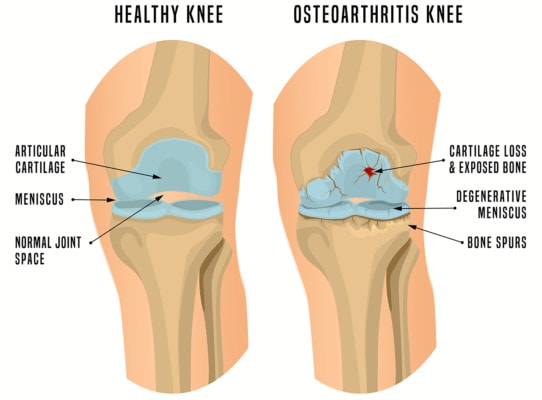What is a bone spur? Can Bone Spurs be Good?
What is a bone spur?
While many patients aren’t sure they know what a bone spur is, it still conjures up fear. This is because they’ve heard the term used in a negative way. So this morning I’d like to dispel the myths and educate you that for some patients, bone spurs may be the only thing holding their joint together.

Double Brain/Shutterstock
A bone spur is a new growth of bone. Since young and healthy joints don’t have these, they have traditionally been seen as bad. In addition, they tend to be found in joints with more arthritis, again a bad thing. However, we’ve known for awhile that bone spurs form to provide stability to an unstable joint. Take for example this recent animal experiment. The authors cut the big ACL ligament in the knee and the joint became unstable (moved around too much causing excessive wear and tear). They then had the animals walk and after a few weeks, bone spurs formed. However, as they formed, the knees of these animals became stable again (no or minimal extra movement in the joint). So in this case, the bone spurs formed to provide the joint with stability. Since a stable joint is one that damages itself less, these bone spurs are good, or what we in Orthopedics 2.0 vernacular call “functional bone spurs”.
The upshot? Believe it or not, there are good bone spurs. Sometimes these protrusions of bone can rub against tissue and cause pain, but for most patients they are a necessary adaption to instability that’s actually saving the joint from further harm. While these may limit range of motion in the joint, without them, the joint becomes unstable again. So the next time you hear about a bone spur, don’t despair-just find out if it’s the good or bad kind!

If you have questions or comments about this blog post, please email us at [email protected]
NOTE: This blog post provides general information to help the reader better understand regenerative medicine, musculoskeletal health, and related subjects. All content provided in this blog, website, or any linked materials, including text, graphics, images, patient profiles, outcomes, and information, are not intended and should not be considered or used as a substitute for medical advice, diagnosis, or treatment. Please always consult with a professional and certified healthcare provider to discuss if a treatment is right for you.